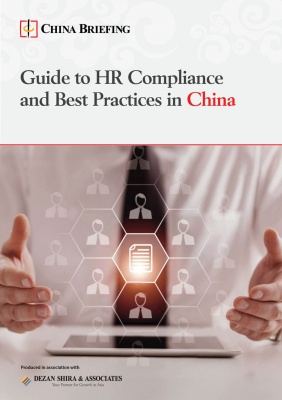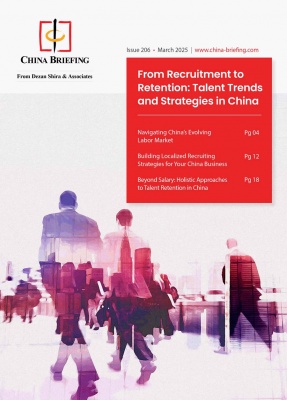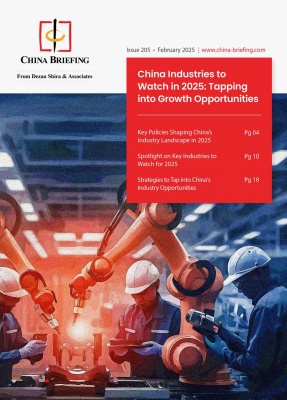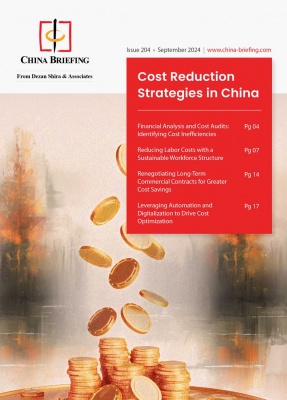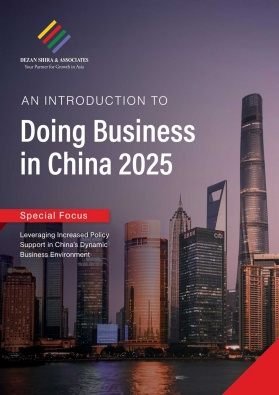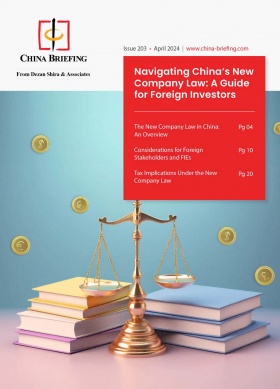China’s Supply Chain Transformation: Technological Innovations and Future Outlook
China’s supply chain is undergoing a transformative shift, driven by advanced technologies like AI, blockchain, IoT, and clean energy innovations. These technologies are enhancing efficiency, transparency, and sustainability across manufacturing, logistics, and global trade. With continued investment and development, China is poised to lead the future of technology-driven, resilient, and eco-friendly supply chains.
China plays a pivotal role in the global supply chain network, not only as a manufacturing hub but also as a critical link in international trade. The country has been at the forefront of adopting innovative technologies to strengthen and transform its supply chains. The recently released 2024 Global Supply Chain Promotion Report, unveiled at the second China International Supply Chain Expo, underscores China’s significant advancements and provides valuable insights into emerging global trends. Among these trends, technological innovation stands out as a primary driver of supply chain transformation, enabling greater efficiency, transparency, and sustainability.
This article explores the cutting-edge technologies and innovations that are reshaping China’s supply chains, including advancements in artificial intelligence, blockchain, automation, and green practices. It also examines the future outlook of these technologies, focusing on how they will contribute to enhancing supply chain resilience, sustainability, and global competitiveness in an increasingly interconnected and dynamic global economy.
Key technologies driving China’s supply chain transformation
China’s supply chain landscape is undergoing a radical transformation driven by several key technologies. These technologies—artificial intelligence (AI), automation, blockchain, clean energy innovations, and the Internet of Things (IoT) —are reshaping supply chain management, improving efficiency, enhancing sustainability, and fostering global competitiveness. The adoption of these innovations is not only helping China meet the demands of modern trade but also positioning the country as a leader in global supply chain management.
Artificial intelligence (AI) and automation
AI and automation are central to China’s supply chain revolution. Chinese companies are deploying AI across multiple areas, from predictive analytics in logistics to robotics in manufacturing.
AI enhances the predictive capabilities of Chinese supply chains, enabling companies to forecast demand, optimize production schedules, and reduce downtime. AI also aids in real-time decision-making, helping businesses swiftly respond to disruptions such as supply shortages or fluctuations in demand. AI-driven automation allows warehouses to maintain high operational efficiency even in the face of labor shortages, addressing the challenges of an aging workforce and reducing human error. Moreover, AI’s ability to optimize delivery routes and manage inventory in real time reduces operational costs, transit times, and fuel consumption, making supply chains not only more efficient but also more sustainable.
JD Logistics, for example, operates the Asia No. 1 smart logistics parks—the world’s first fully automated warehouses in cities like Shanghai and Beijing. These hubs leverage AI-powered systems for order processing, route optimization, and predictive maintenance, allowing them to handle over 100,000 orders per day.
In manufacturing, AI and robotics are utilized for tackling modern supply chain challenges while enhancing efficiency and resilience. Factory logistics, which includes managing raw materials, components, and finished goods, plays a pivotal role in this shift by optimizing storage, inventory control, and transportation. The global factory logistics market, valued at US$12.3 billion in 2023, is projected to grow to US$19.5 billion by 2028, with China driving much of this expansion. The adoption of advanced technologies enables Chinese manufacturers to digitize and connect operations, making logistics systems smarter and more adaptable. For instance, IIoT allows real-time monitoring of material flows, while AI predicts and resolves bottlenecks. Robotics, including automated guided vehicles (AGVs) and collaborative robots (cobots), have revolutionized internal supply chains by improving efficiency in material handling and assembly, particularly in precision-driven industries like electronics and automotive manufacturing.
Blockchain and IoT: Enhancing transparency and connectivity
Blockchain and IoT technologies are making China’s supply chains more transparent and interconnected. Blockchain ensures secure, tamper-proof transactions across the supply chain, from raw material sourcing to product delivery. The “Single Window” platform, launched by the Chinese government, uses blockchain for seamless customs and trade operations, enabling real-time tracking and reducing fraud.
IoT devices, on the other hand, provide real-time insights into the status of goods, which improves decision-making and reduces supply chain risks. Companies like Alibaba and Huawei are using IoT-enabled solutions to monitor the location and condition of products, improving the flow of information across global supply chains.
With IoT’s real-time data collection, companies can better forecast demand, reduce inventory costs, and optimize logistics operations. Blockchain’s transparency also reduces the need for intermediaries, accelerating transactions and improving coordination.
Clean energy innovations: Driving sustainability
China is committed to reducing its carbon footprint, and its supply chains are at the forefront of this transformation. Under the “dual carbon” strategy, China integrates renewable energy and electric vehicle (EV) fleets into its supply chains. Tianjin Zero-Carbon Port is a prime example of a company that employs solar and wind energy to reduce emissions. Additionally, logistics companies are adopting EVs for deliveries, which helps reduce the carbon footprint of transportation.
Integrating renewable energy reduces reliance on traditional fossil fuels, lowering energy costs and promoting sustainable practices. Electric logistics fleets help reduce fuel consumption and lower operating costs, while clean energy-powered infrastructure makes supply chains more resilient to energy price fluctuations.
Furthermore, AI and blockchain technologies are enhancing the traceability of green sourcing and energy use, ensuring that companies adhere to environmental regulations and sustainability standards.
Impact and future outlook
China’s investments in emerging technologies have placed it at the forefront of supply chain innovation. Technological advancements, particularly in AI, automation, blockchain, IoT, and clean energy, are transforming supply chains in China. These technologies help to enhance efficiency, resilience, sustainability, connectivity, and global competitiveness. By adopting these innovations, Chinese supply chains are becoming more robust, transparent, and capable of meeting the challenges of modern trade and environmental goals.
Additionally, the country’s digital trade infrastructure, including platforms for e-commerce and trade finance, is facilitating cross-border trade and making it easier for Chinese businesses to integrate into global supply chains. This digital and technological edge enhances China’s global competitiveness, helping it maintain its position as the world’s manufacturing powerhouse and a key trade partner.
Looking forward, the future of AI in China’s supply chain will involve deeper integration of deep learning algorithms and advanced analytics to automate decision-making processes. AI is also expected to expand into areas like last-mile delivery, real-time stock replenishment, and dynamic supply chain planning. The ongoing advancements in machine learning will make China’s supply chains more adaptive and capable of responding to sudden shifts in market conditions.
As 5G networks expand, IoT will become even more powerful, enabling faster and more reliable communication across supply chains. Blockchain will likely see increased integration with other technologies like AI and smart contracts, automating processes such as payments and compliance checks. This will make transactions faster, more secure, and more transparent
With China moving toward carbon neutrality by 2060, green technologies such as hydrogen-powered trucks, biodegradable packaging, and sustainable materials will become more prevalent in supply chains. AI and blockchain will further optimize resource management, reduce waste, and enhance energy efficiency across the supply chain, making it not only more sustainable but also more cost-effective.
About Us
China Briefing is one of five regional Asia Briefing publications, supported by Dezan Shira & Associates. For a complimentary subscription to China Briefing’s content products, please click here.
Dezan Shira & Associates assists foreign investors into China and has done so since 1992 through offices in Beijing, Tianjin, Dalian, Qingdao, Shanghai, Hangzhou, Ningbo, Suzhou, Guangzhou, Haikou, Zhongshan, Shenzhen, and Hong Kong. We also have offices in Vietnam, Indonesia, Singapore, United States, Germany, Italy, India, and Dubai (UAE) and partner firms assisting foreign investors in The Philippines, Malaysia, Thailand, Bangladesh, and Australia. For assistance in China, please contact the firm at china@dezshira.com or visit our website at www.dezshira.com.
- Previous Article China Monthly Tax Brief: December 2024
- Next Article 23 Matters That Can be Customized in a Company’s Articles of Association (Part I)












